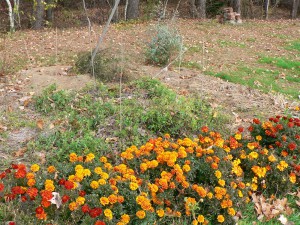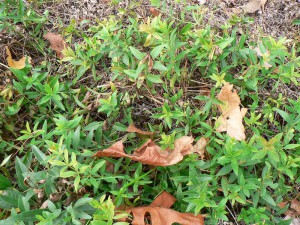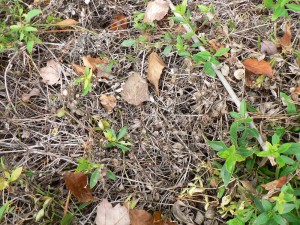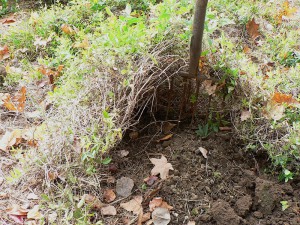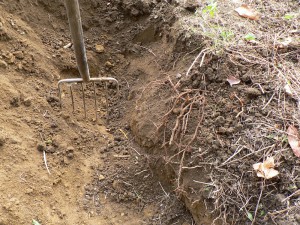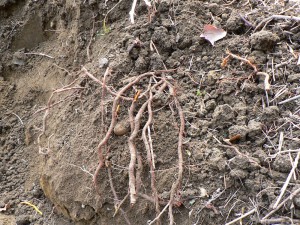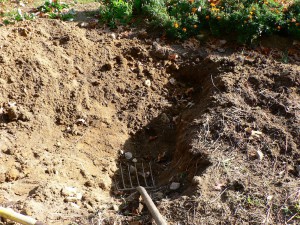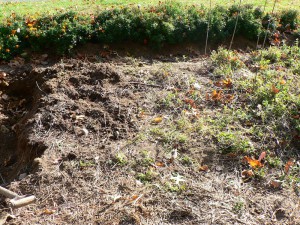After a glorious and fairly mild autumn, the colder weather arrived about a week and a half or two weeks ago. We have had at- or below-freezing temperatures every night since then. Fortunately it’s been warm and sunny in the day times, so the ground isn’t frozen. It has also been very dry, so the soil isn’t wet or heavy. Perfect weather for digging up the madder bed in my fiber and dye plant garden at Bramble Hill Farm. So, on Saturday I headed over there in the morning… a bright but cold and windy day.
I planted the madder bed about 4 years ago when I first got the garden plot. It was a key component of my fiber camp at Summerfun that summer, and I’ve kept it going ever since. After trying to contain the madder bed for a couple years, I decided to let it spread this spring, which it happily did. I have always read that you need to wait at least three years before harvesting madder roots. I mistakenly assumed that this meant the longer you leave the plants in the ground, the better. Not so, according to Gina Gerhard, flax maven and all-around excellent resource for old-timey crafts. I learned from her this spring that if you leave the roots in the ground too long, they get woody and they won’t produce as much color. So, I ought to have harvested last fall, but better late than never.
Despite the frosts, the marigolds were still chirpy. I harvested all the blossoms.
Behind the marigolds you can see the madder bed. Beyond that are the totally dead orange cosmos (which went into the compost), the droopy bronze fennel (which I cut and dried), and the eucalyptus still looking perky (which I left alone).
You are supposed to harvest madder roots while the aerial parts of the plant are dormant (the leaves and above-ground stems). I figured after so many frosts that all the aerial parts would have died back. However, some areas were still green:
Other areas were dried up and dead:
Madder is a sprawling plant with very prickly stems. Working with the plant in the summer sometimes gives me a rash, actually, which is itchy and painful. But no hard feelings. I still love it because it is *the* temperate climate source of red, and the plant-based red extraordinaire, regardless of your location.
Here’s how much above-ground plant material I had to remove before digging down for the roots:
Digging up the roots is an excavation process. You have to work in layers, then move away the extra dirt after you’ve sifted through it carefully. Here are some of the roots sticking out of the soil:
Here’s a close-up:
After about 5 hours I only managed to dig up a third of the bed! Here’s what I dug up:
Here’s the next third of the bed, which I cleared of the tops and I hope to harvest before the ground really does freeze:
And here’s the third that I plan to leave for coming years:
Stay tuned for how I washed and dried the roots!

